Welcome to Ceramic Review
Ceramic Review is the magazine for contemporary and historical ceramics, ceramic art and pottery.
Ceramic Review Issue 334
July/August 2025
Ceramic Review is the magazine for contemporary and historical ceramics, ceramic art and pottery.
July/August 2025
Artist and maker Katie Timson combines her passion for nature with her love of clay to create vessels and jewellery influenced by rocks, pebbles, eggshells and found objects. CR spoke to the emerging maker to find out more about her tactile organic pieces
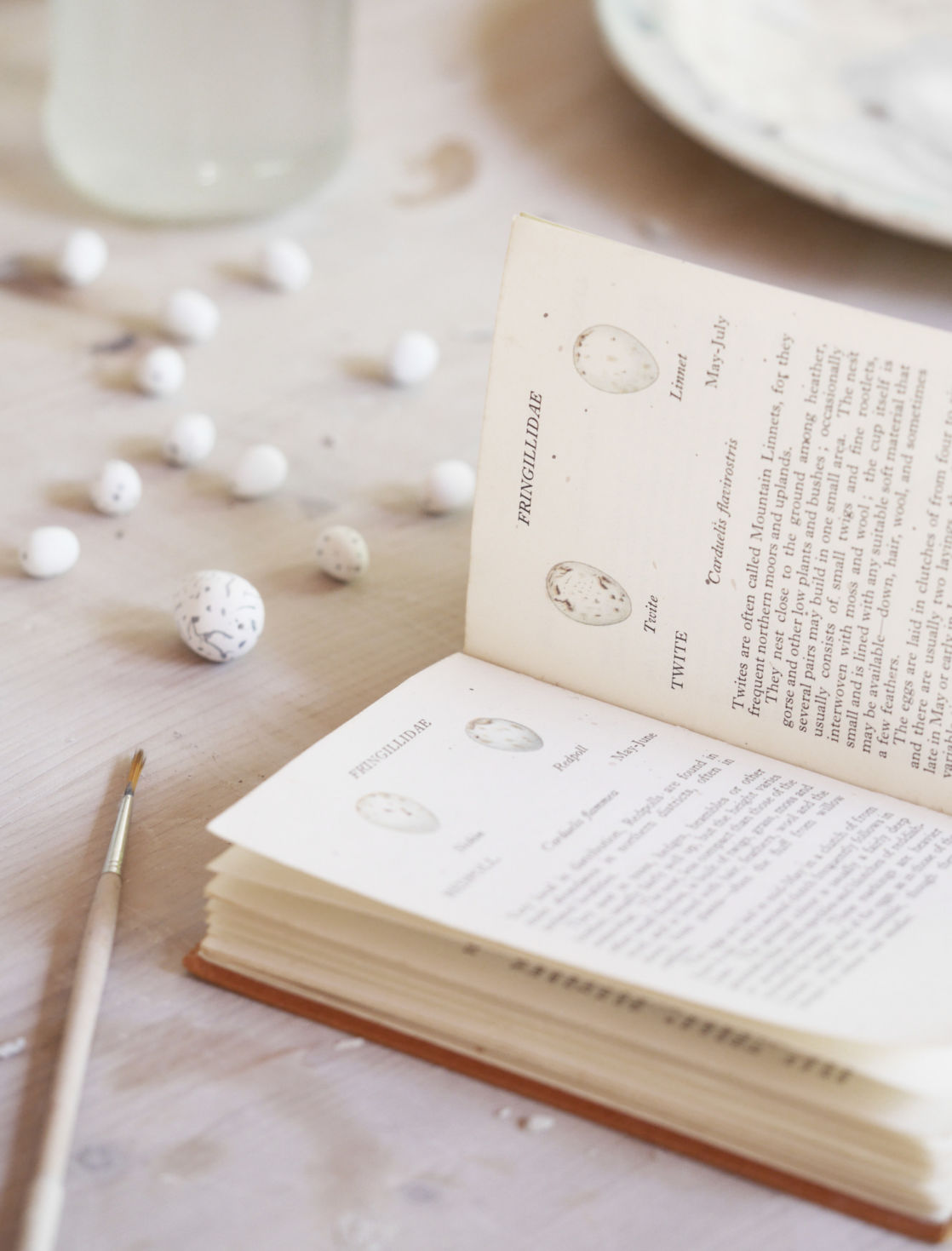
Katie Timson's studio; courtesy of the artist
I make simple decorative and functional ceramic vessels and jewellery. My work is inspired by elements of nature seen or collected while out walking, such as fragments of eggshells, rocks, pebbles, feathers and sea-glass. It seems natural to me to combine two of my greatest passions – nature and ceramics – together. It means that I’m constantly being inspired, no matter what the location and environment. I’ve loved nature and walking, along with designing and making for as long as I can remember. My grandparents lived close to the sea so I spent many weekends on the beach watching the water, admiring pebbles and listening to the wading birds. I’m always on the lookout for different colours, textures and patterns – I seem to automatically translate everything I see into ideas for everything from ceramics and jewellery to textiles. I take a lot of photos for reference and there are usually found objects somewhere in my coat pockets or bag. My mind never really switches off from making and I’m always thinking about new ideas.
I think I’d describe myself as a maker; I throw or hand build all my work using stoneware clay for the pots and porcelain for my eggshell jewellery. The jewellery and pots based on rocks and pebbles are made using clay bodies of my own recipes. It involves extra work and cost before I’ve even started making but to me it’s worth it and is the best way to achieve the finish and textures I’m after. I always enjoy experimenting with the clay bodies and trying out different additions.
I fire between 1240°C and 1280°C depending on the type of work and in two different firing atmospheres – electric oxidation and gas reduction, which gives me differing effects. I create my own glazes and always have done. While studying, I constantly experimented with and altered different recipes as the infinite outcomes meant there was always something new to try. It took up a huge amount of time but I’ve ended up with a vast library of test tiles and notes that will act as an archive I can refer to for years to come. The glaze for my eggshell-inspired pieces is not very forgiving so it can be a bit tricky to achieve the ideal finish. I hand-paint all the pattern details on top of the powdery glaze before the pots go into the kiln for the glaze firing. I’m often asked why I don’t just use a speckled clay or glaze, but if I did, the type and distribution of the markings wouldn’t be correct for each bird’s egg species. As each piece is inspired by and named after a specific bird’s egg, such as Blue Tit, Swallow and Cirl Bunting, it’s important to me to get the pattern and colour as close as I can to the real thing.
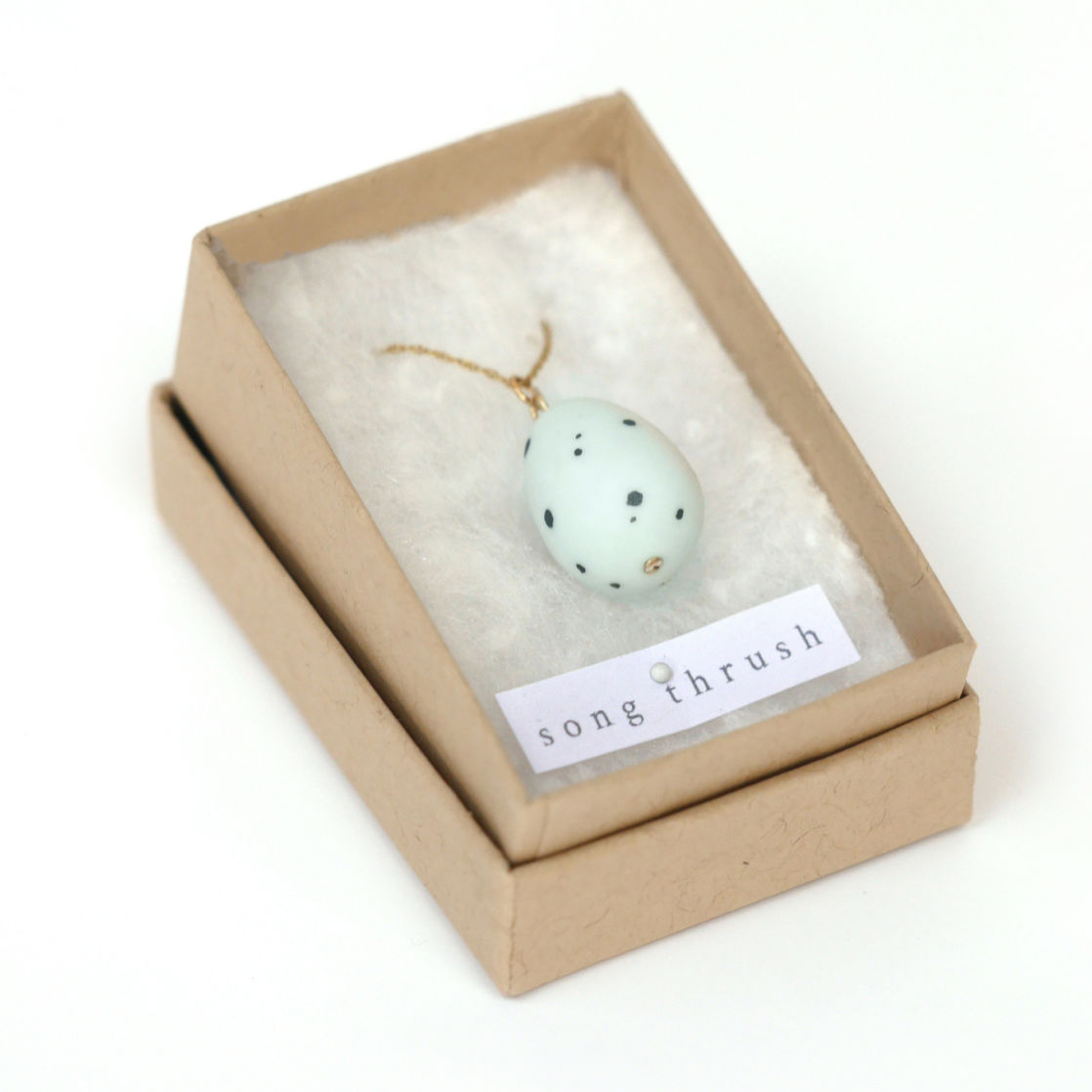
Work by Katie Timson; courtesy of the artist
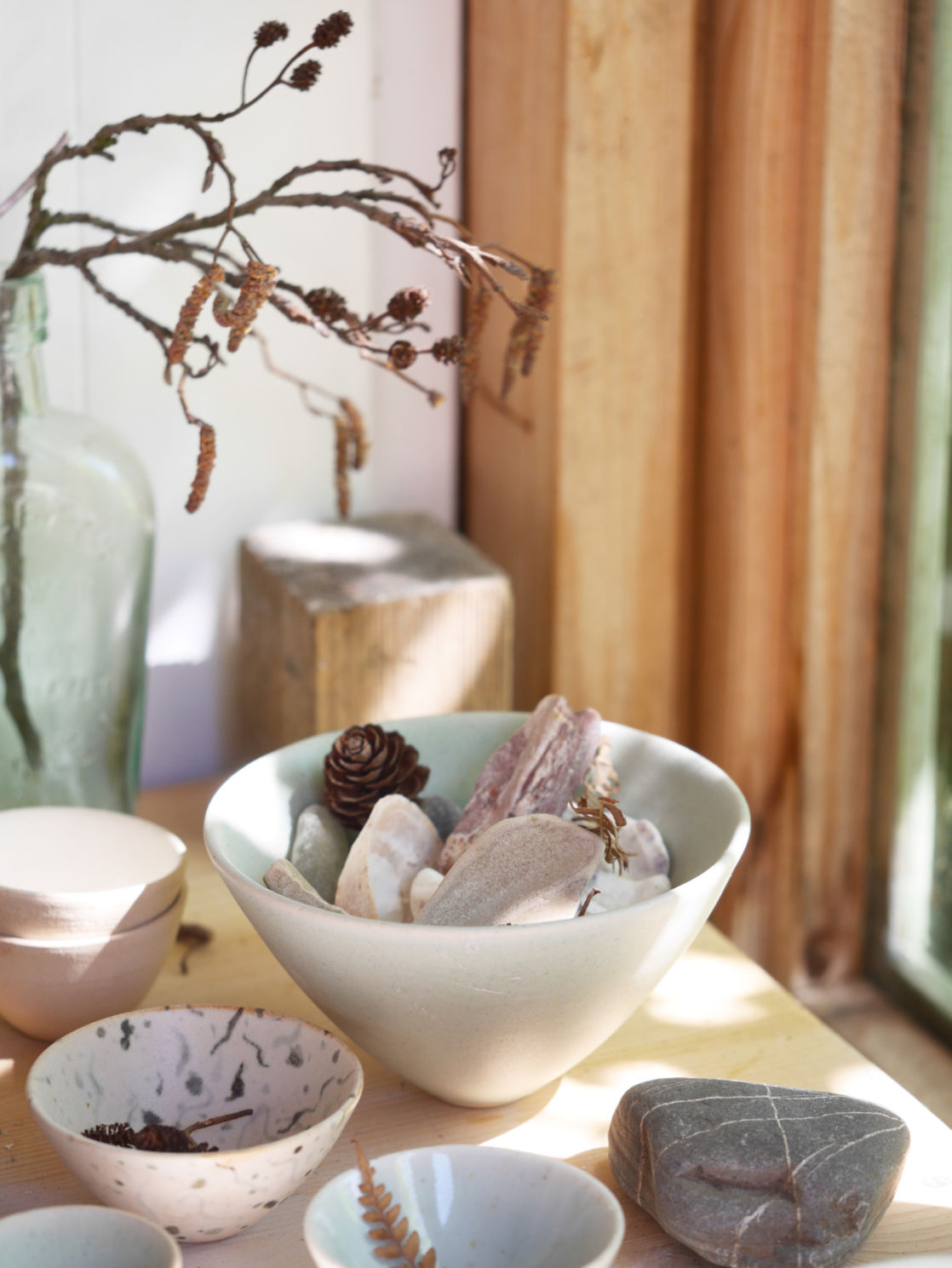
Work by Katie Timson; courtesy of the artist
I first got the idea to incorporate bird eggs into my work when I was scrambling up some rocks in Yorkshire one day. I found a fragment of an incredibly bright blue bird’s egg. I’d never seen one so vivid before and had no idea what bird it belonged to. When I arrived back home, I searched through my collection of old bird books to try and identify the mystery egg. It was as I turned the pages that it struck me just how beautiful the colours and patterns of different bird’s eggs are. I see them as miniature works of art, which led to the idea of making porcelain versions as the focal point of earrings and necklaces.
I studied a design and craft BA at the University of Central Lancashire, during which I really enjoyed working with different materials such as wood, clay, textiles and metal. I specialised in ceramics in my final year and it was during that time that I brought my ceramic eggshell-inspired pieces to life. As well as the jewellery, I created a range of tableware and bud vases. The pieces were slip-cast in earthenware using moulds made from carved clay models and the eggshell finishes were achieved using slips, underglaze and a transparent glaze.
The first time I felt I’d found my own path was when I exhibited at New Designers at the end of my BA with my bird egg pieces in their initial form. It was the first time I’d shown my ceramic work anywhere and the reaction made me feel that all the hard work had been worthwhile and that I’d found my niche as a maker. I went straight on to a Masters in Ceramics as I felt there was so much more I wanted and needed to learn. While studying, I continued to make my slip-cast eggshell pieces for galleries and orders, but after making the pieces over and over again, I began to feel like a one-woman production line and there were issues with every stage of their making. Using only moulds and liquid clay also made me feel somewhat removed from the material. It did however reinforce my desire to learn to throw and hand build and I jumped headfirst into the world of stoneware clays and glazes, which I’ve found much more rewarding and exciting. I wanted to continue with my eggshell idea, but also make work to sit alongside it inspired by other things I collect.
Exhibiting at various shows and fairs over the past couple of years has been very rewarding and everyone, from fellow makers to the organisers, volunteers and visitors are always so lovely. I was very surprised to receive the Best New Business Award from Made By Hand Online at the Bovey Tracey Contemporary Craft Festival this year, which was really encouraging. I was fortunate to have had brilliant tutors, in particular David Binns and technical advice from Geoff Wilcock, while studying and they’ve been very supportive since, especially helping me with my lack of a kiln and proper workspace. Through them I’ve also been lucky to participate in a group residency at the International Ceramics Studio in Kecskemét, Hungary, twice. Living and working at the studio was such an immersive experience and during my stay last year I fell head-over-heels for wood firing. Alongside the beautiful and varied results, I loved every aspect of the process and I really hope I am able to do more in the future.
Most people react with a smile when they see my work, especially the bird’s egg-inspired pieces. It’s something I didn’t expect and I never get tired of. I’m often told my pieces look very calm, delicate and tactile, which leads to a lot of bowl-stroking. One of my favourite things is when people tell me stories about their love of nature, birds and collecting, or that my work inspires them to slow down and look more closely at their natural surroundings.
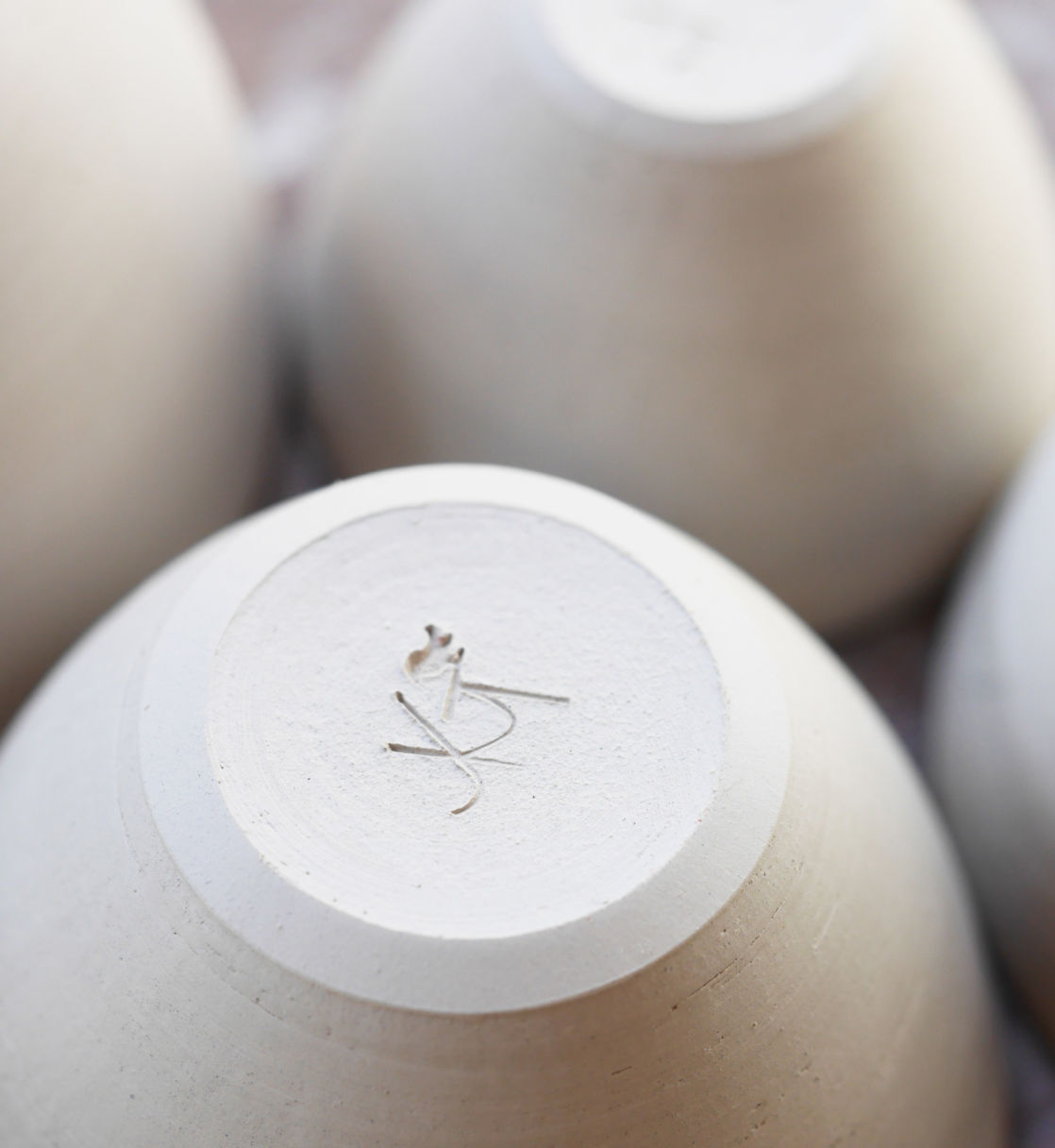
Work by Katie Timson; courtesy of the artist
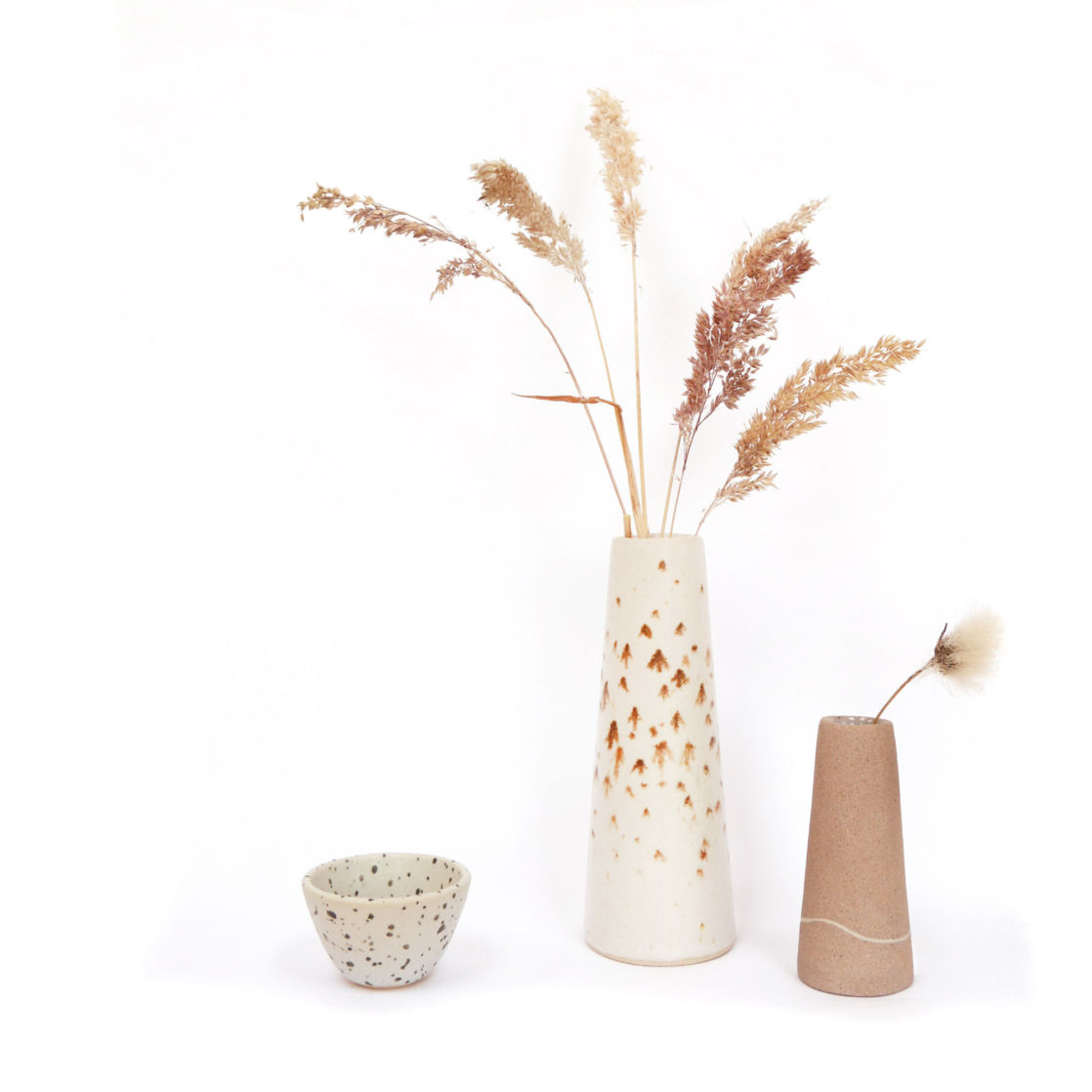
Work by Katie Timson; courtesy of the artist
I’ve recently started teaching for the first time at a newly opened ceramics studio in Preston, which I’m enjoying and would like to continue. It’s very rewarding to be able to share my love of clay with new people and watch as they learn. I’ve been working in a tiny shed in the garden since graduating, but now I’ve finished my artist residency at my old university I’m moving into a new shared studio space, which will make working much easier and more efficient. I intend to still work in my shed some of the time, but it will be exciting to have running water, proper lighting and heat along with space to move around without tripping over buckets and freshly thrown pots all the time.
I have a lot of ideas for new forms and some new ranges inspired by feathers and tree bark. As always, it’s a case of trying to find time to experiment and test while also making my existing ranges to show and sell. At the moment, I’d really just love to be able to carry on bringing my ideas to life and making people smile.
For details visit katietimson.co.uk; This article is taken from Ceramic Review issue 301 (January/February 2020). For more, subscribe below.